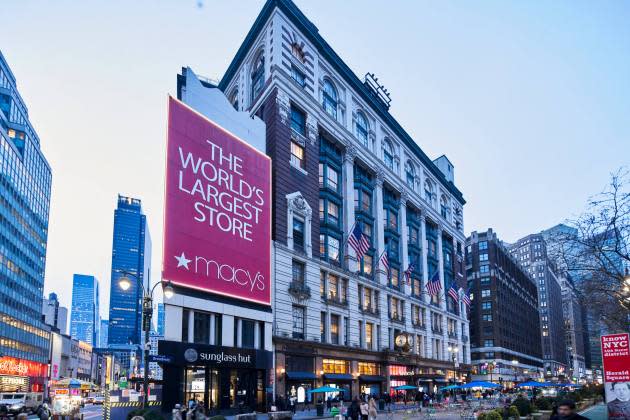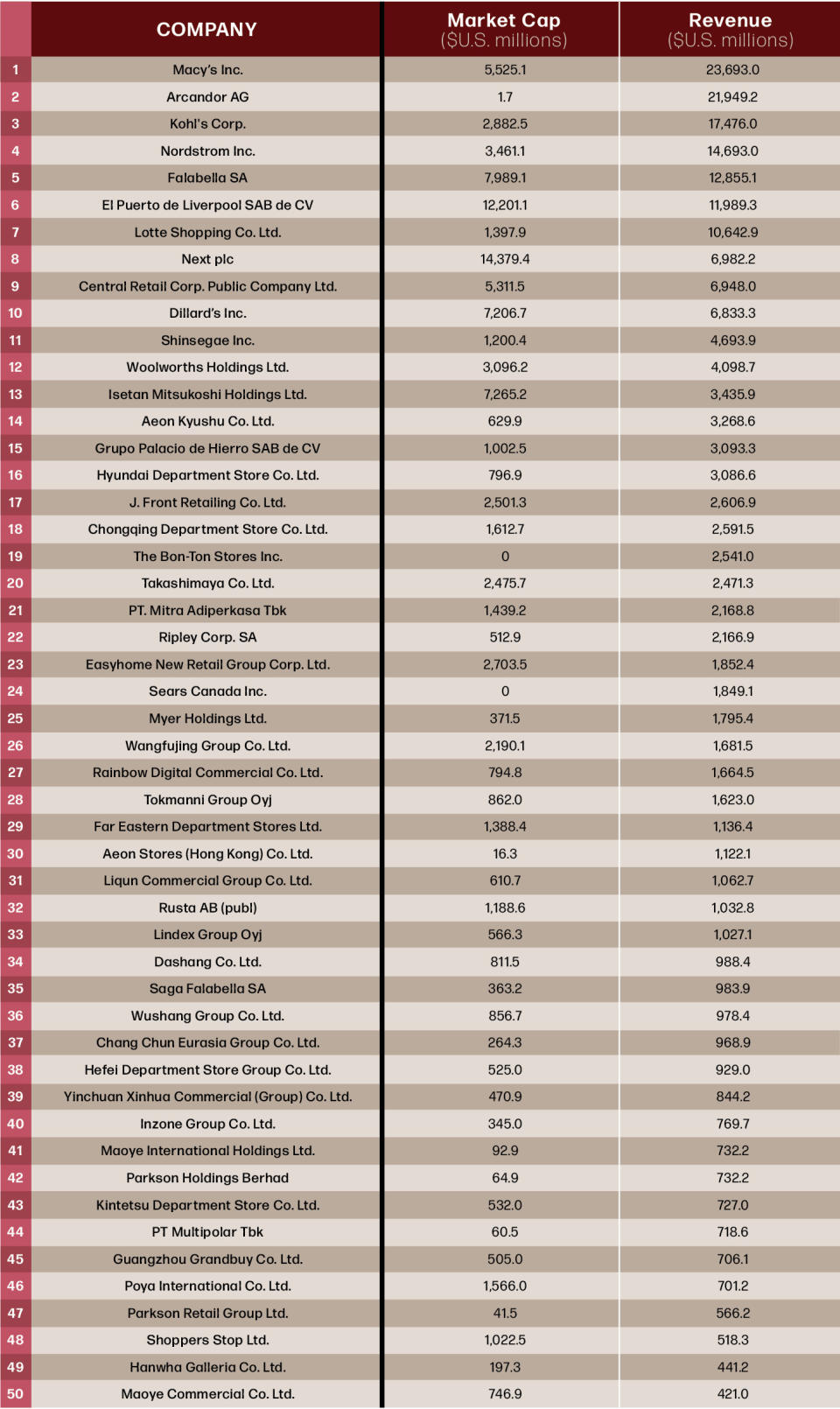Department Stores Ranked by Sales

According to the U.S. Census Bureau, the share of department store sales of total retail sales was about 14 percent in 1993. Today, that number has dropped to less than 3 percent. While retail analysts cite a number of factors for this change — such as the rise of Walmart and Amazon — one thing is clear: the department store channel is unrecognizable today.
Through consolidation, acquisition and bankruptcy, the nameplates of high-end, regional and discount department stores in the U.S. that have vanished include Abraham & Straus, Ames Department Stores Inc., Bradlees, The Bon Marché, Filene’s, Hecht’s, Kaufmann’s, E. J. Korvette, Lord & Taylor, Marshall Field’s, Mervyn’s and Robinsons-May, among many others.
More from WWD
Vestiaire Collective CEO Max Bittner Talks About Hitting Profitability Before an IPO
New AI-powered Technology Aims to Improve Customer Engagement
EXCLUSIVE: Farm Rio's Paris Store Sets Stage for Retail Acceleration, Further Growth
Globally, however, the department store format is doing well. In China, for example, the channel has seen sales double in the past five years with 30 percent of urban shoppers visiting department stores at least once a week, according to Mintel. In Asia, though, many department stores are different than what shoppers would find in the U.S.: Smaller and more experiential formats are all the rage.
Here, WWD culled data from S&P Capital IQ to create a list of the top 50 publicly traded (or with public debt) global department stores — as categorized by the firm. The ranking is by sales for the trailing 12 months as of May 22. Market capitalization is also listed.
Topping the list was Macy’s Inc. with $23.7 billion in sales. Taking second place was Arcandor AG with $22 billion. Arcandor is a German holding company that was formed from the merger of Karstadt Warenhaus AG with Quelle AG. Kohl’s came in third with $17.5 billion.

Best of WWD

 Yahoo Finance
Yahoo Finance 